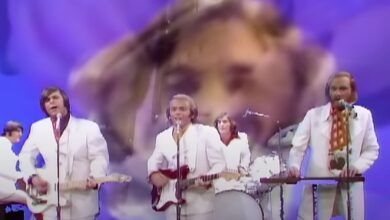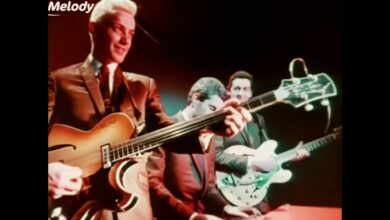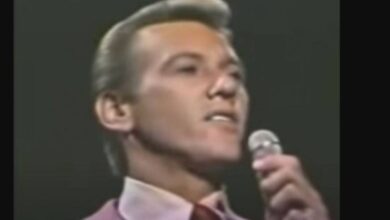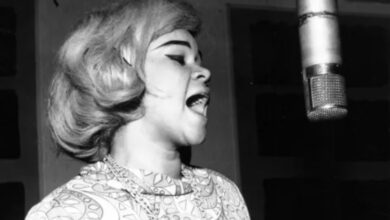Gale Garnett’s “We’ll Sing in the Sunshine” Brings Independent Spirit to the Charts in 1964
In 1964, while Beatlemania swept across the United States and electric guitars began to dominate radio waves, a soft-spoken anthem of freedom and fleeting love quietly climbed the charts. Gale Garnett’s “We’ll Sing in the Sunshine” didn’t just stand out—it stood firm, a folk-pop gem that celebrated female independence at a time when such themes were rarely front and center in popular music. The song reached No. 4 on the Billboard Hot 100 and claimed the No. 1 spot on the Adult Contemporary chart for seven weeks, solidifying Garnett’s place in music history. With its lilting melody and confident message, the song would become one of the era’s most memorable folk-pop crossover hits.
Gale Garnett was born in New Zealand and raised in Canada, a worldly upbringing that added depth to her music. She entered the folk scene in New York during the early 1960s, a time when coffeehouses buzzed with protest songs and acoustic guitars. Her voice—a smoky, alto blend of intimacy and strength—set her apart from both traditional folk singers and pop performers. While many of her contemporaries leaned into earnest ballads or political commentary, Garnett gravitated toward storytelling that was personal, yet universally resonant.
“We’ll Sing in the Sunshine” was written by Garnett herself, and remarkably, she claimed to have written it at the age of 14. It was inspired, she said, not by heartbreak, but by the idea of owning one’s life and choices. The song tells the story of a woman who refuses to promise forever—offering love for a year, then asking to part without regret. At a time when most female singers were cast as yearning lovers or broken-hearted women, Garnett flipped the script with poise. The character in her song was self-assured, warm, and entirely in control of her destiny.
The recording of the track was deliberately minimalist, staying true to its folk roots while gently leaning into pop sensibilities. Acoustic guitar, subtle bass, and occasional harmonies provided a delicate backdrop for Garnett’s commanding voice. There was no elaborate orchestration, no studio tricks—just a clear, confident vocal that carried the narrative with grace. The production gave the song room to breathe, and that space allowed the message to ring loud and clear.
Upon its release, “We’ll Sing in the Sunshine” was met with widespread acclaim. Critics praised it as refreshingly honest and lyrically bold. Within weeks, the song found itself climbing the charts—not only in the U.S. but also in Canada, Australia, and several European countries. It would go on to win the Grammy Award for Best Ethnic or Traditional Folk Recording in 1965, an extraordinary feat for a debut single penned and performed by a woman.
Beyond its chart performance, the cultural impact of the song was profound. Garnett’s lyrics resonated especially with women who were beginning to question traditional roles in relationships and society. In the years leading up to the women’s liberation movement, “We’ll Sing in the Sunshine” offered a soft, melodic rebellion—an early expression of autonomy wrapped in a three-minute folk song. It was one of the first times a mainstream hit had voiced such themes from a woman’s perspective, and it opened the door for future artists to do the same.
For Garnett herself, the success of the song led to television appearances, international tours, and greater creative freedom in her subsequent projects. Although she would never replicate the commercial success of “We’ll Sing in the Sunshine,” she remained an active performer and creative force in the years that followed. Her brief moment in the limelight was not a fluke—it was the result of vision, timing, and a song that struck the right chord with a changing world.
The influence of the track didn’t stop at Garnett’s own career. Over the years, “We’ll Sing in the Sunshine” was covered by a range of artists—from Dean Martin to Dolly Parton—each interpreting the song through their own stylistic lens. These covers, though varied, retained the core of Garnett’s message: love doesn’t have to last forever to be meaningful. It was a sentiment that grew more relevant with time, embraced by new generations of singers and listeners alike.
Particularly noteworthy was Dolly Parton’s 1984 cover, which brought the song into the country mainstream. While Garnett’s original version leaned toward folk-pop, Parton’s rendition wrapped the melody in twang and steel guitar, reaffirming the song’s timelessness. Other artists, including Sonny & Cher and Helen Reddy, also performed or recorded their own takes, proving the song’s elasticity and staying power across decades.
Around the time of the song’s success, Garnett balanced her music career with acting and writing. She appeared in films and on television, and later in life, she became a novelist. But it was always “We’ll Sing in the Sunshine” that followed her, anchoring her identity in the public’s memory. Though she never sought to become a superstar, she had created something enduring—an anthem that outlived the moment it was born into.
Long after its initial release, the song continued to receive airplay on classic hits and easy listening stations. It appeared on numerous compilations and retrospectives of 1960s music, often cited as a milestone in folk-pop crossover and female-led songwriting. Its inclusion in retrospectives of Grammy-winning songs ensured that Garnett’s contribution to music would not be forgotten.
Musically, the track helped pave the way for other singer-songwriters, especially women, to assert agency in their lyrics. Its calm confidence and refusal to conform to romantic conventions were echoed in later works by artists like Joni Mitchell, Carly Simon, and Joan Armatrading. In that sense, “We’ll Sing in the Sunshine” was ahead of its time—a gentle revolution set to an acoustic rhythm.
Though Garnett gradually stepped away from the music industry, she was occasionally recognized in later years for her contribution to folk music and for penning a song that still felt fresh decades later. In interviews, she reflected on the song with affection but never with grandeur. For her, it was just a song she believed in—and maybe that sincerity is why it endured.
Ultimately, “We’ll Sing in the Sunshine” remains a defining moment not just in Gale Garnett’s career, but in the broader landscape of 1960s music. It captured a shifting spirit of independence, particularly among women, and did so with warmth instead of defiance. In a time of sweeping cultural change, Garnett chose subtlety—and in doing so, she made a powerful, lasting statement.
In today’s world of short-lived singles and ever-changing trends, the quiet brilliance of “We’ll Sing in the Sunshine” reminds us that a good song doesn’t need to shout to be heard. It just needs to speak the truth—and sometimes, that’s enough to echo for generations.



